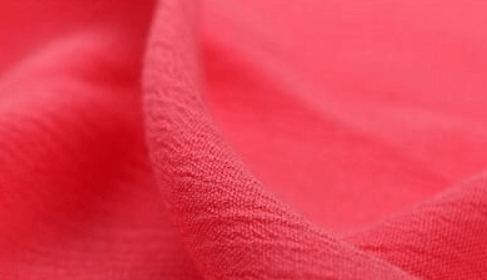© Copyright 1976-2021 Shazhou Textile Dyeing Import & Export Co., Ltd. All rights reserved. Powered by iwonder.cn
The cotton crepe fabric is a thin plain cotton fabric having a uniform longitudinal wrinkle on the surface, which is also called a crepe. The crepe is very cool and soft, and the latitude has good elasticity. The yarns used in fabrics are generally below 14.6 (more than 40 inches) and the texture is light and thin. There are various kinds of bleaching, plain color, printing, yarn dyeing and the like.

The warp yarn used for the crepe is ordinary cotton yarn, and the weft yarn is a strong crepe yarn that has been shaped. After being woven into a grey fabric, it is subjected to pre-treatment such as singeing, scouring, bleaching and drying, so that the fabric is subjected to hot water or hot lye treatment for a certain period of time, and latitudinal shrinkage (about 30% shrinkage) Forms a uniform and even wrinkle, then dyes or prints, and sometimes resin finishing.
It is also possible to process the fabric by embossing before squeezing, and then by loose pre-treatment and dyeing and finishing, so that the wrinkles of the fabric surface can be finer and more uniform and regular, and various straight and thin strips can be formed. In addition, the weft direction can also be alternately woven into a herringbone wrinkle fabric by using a strong twisted yarn and a normal yarn.
Due to the quota restrictions imposed on imported Chinese silk by Europe, the United States and Japan, the demand for Chinese silk has dropped sharply in the international market since the second half of 1994. The demand for the entire international market, especially in Southeast Asia, such as Japan and South Korea, has soared, and the domestic market is in a good shape. Pure cotton crepe cloth has excellent characteristics such as strong hygroscopicity, not easy to wrinkle, good licking effect, comfortable wearing, and the price is cheap, which is cheap and good.
Cotton crepe fabric is a kind of cellulose fiber processed and synthesized, the most common being viscose fiber. Viscose fiber has good hygroscopicity, and the moisture regain rate is about 13% under normal atmospheric conditions. Significantly swells after moisture absorption, the diameter increases by up to 50%, so the fabric feels hard after the water is launched, and the shrinkage rate is large. The chemical composition of viscose fiber is like that of cotton, so it is more resistant to alkali than acid, but alkali and acid resistance are worse than cotton. Rich fiber has good alkali and acid resistance.